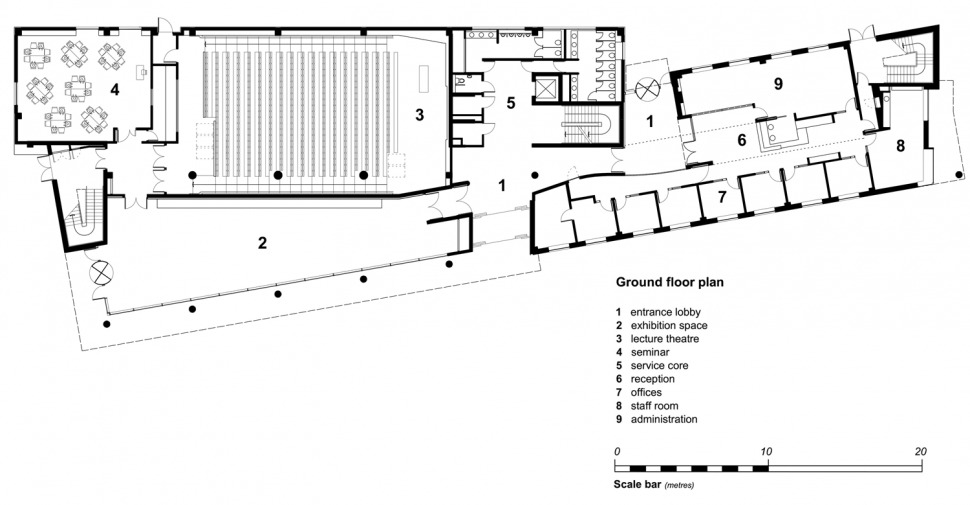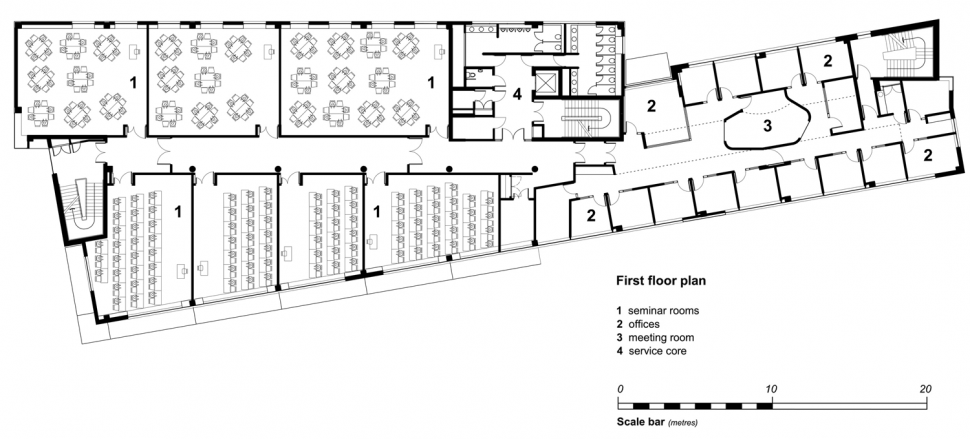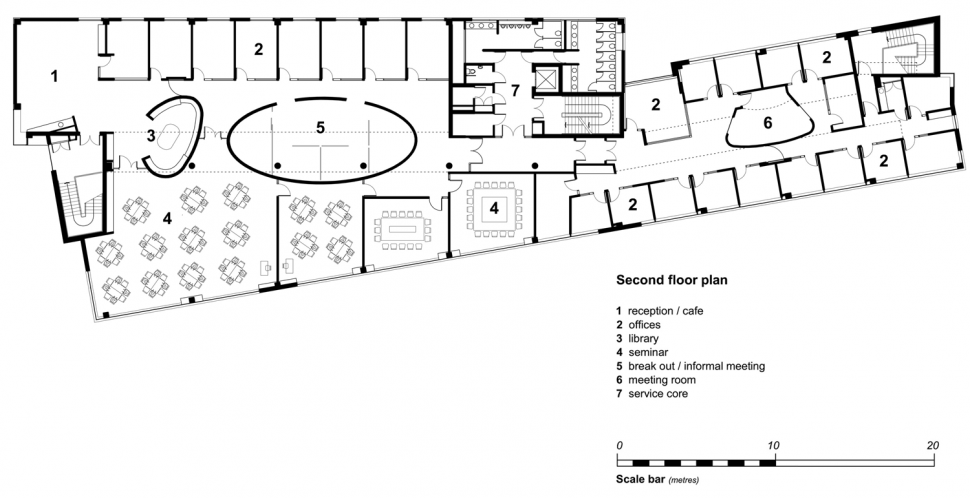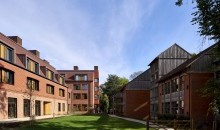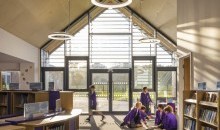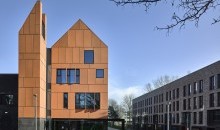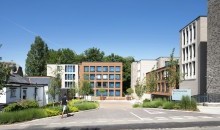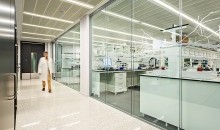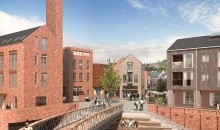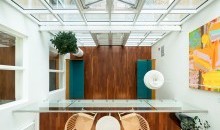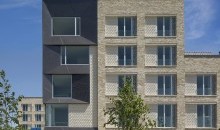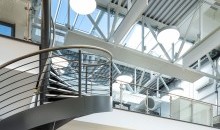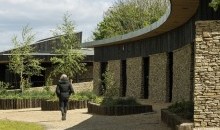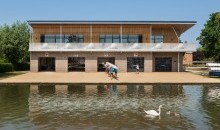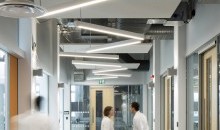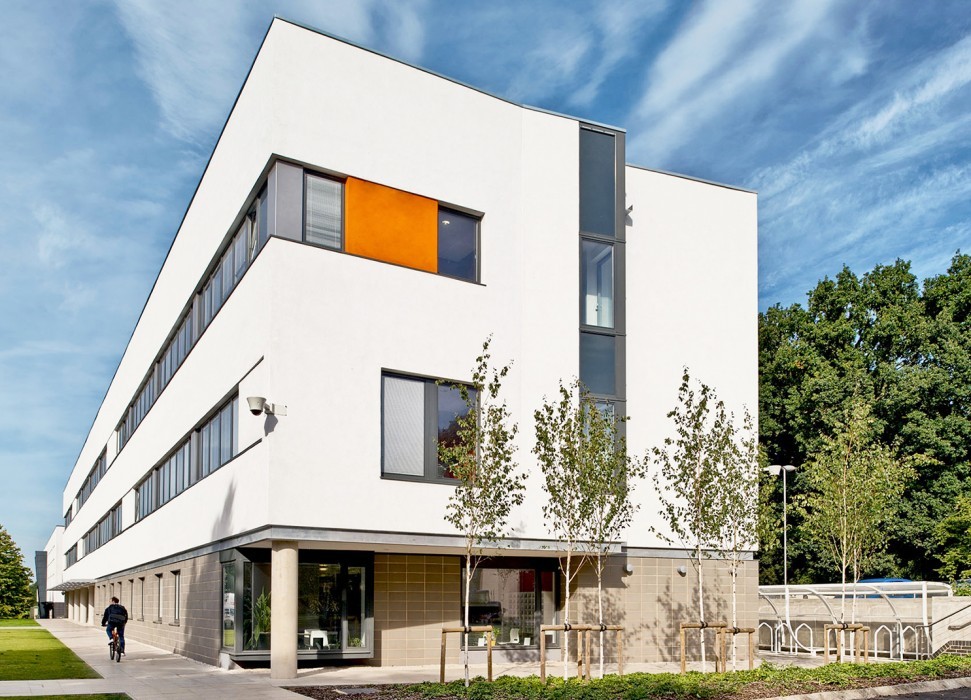
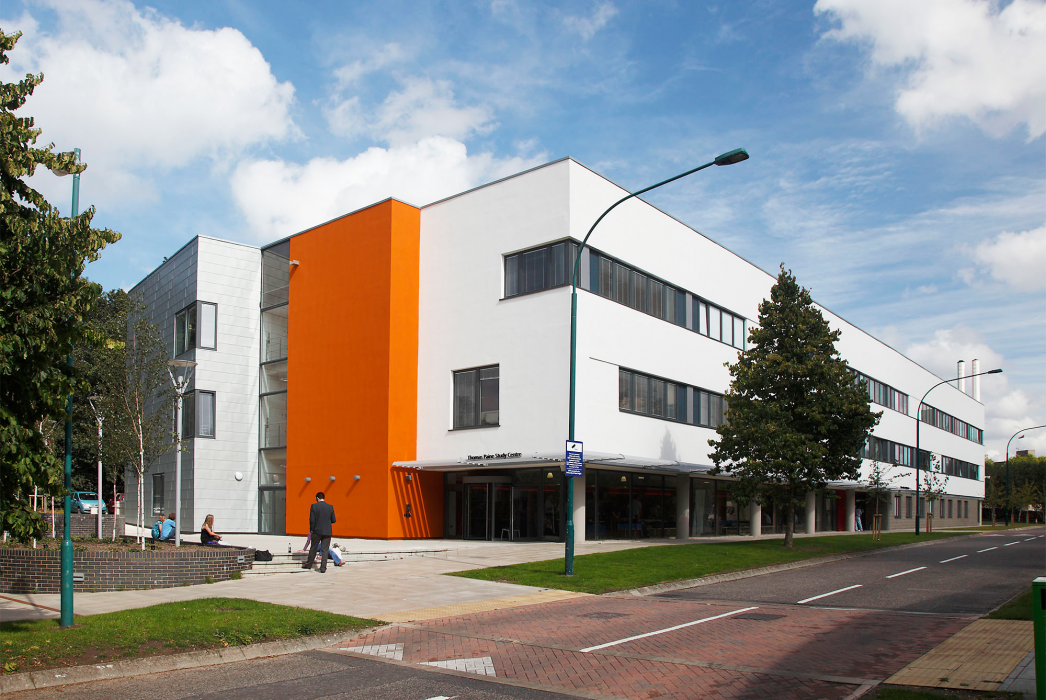
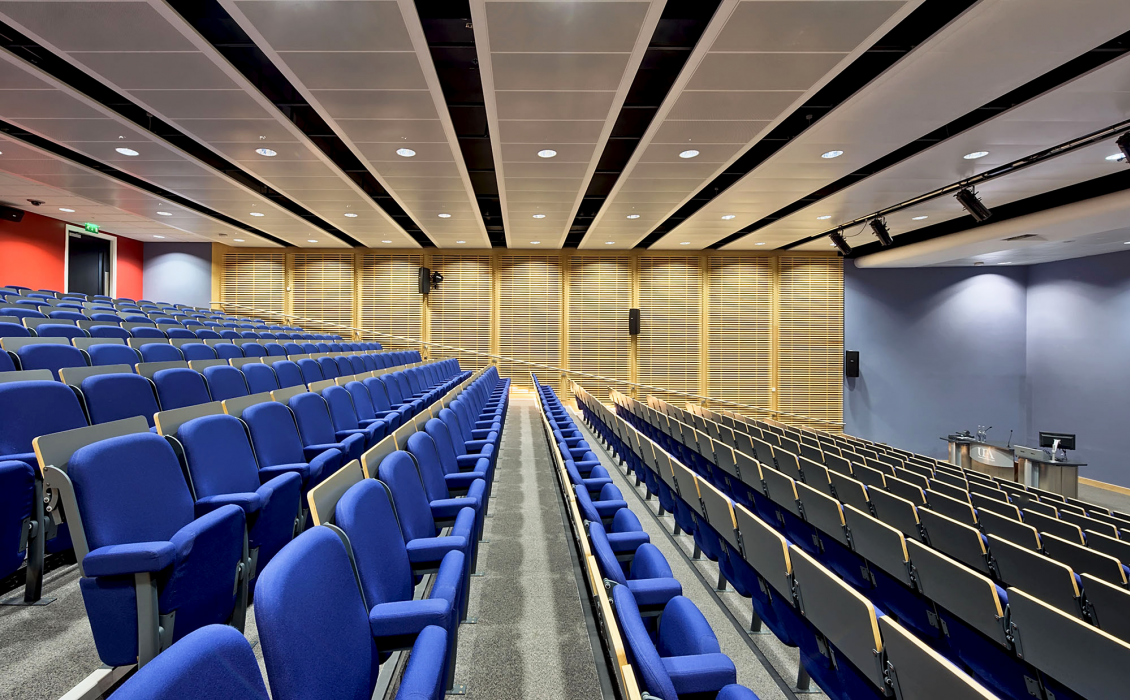

Client:
University of East Anglia
Size:
4,000m²
Value:
£12m
Awards:
RICS Eastern Region Sustainability Awards, Highly Commended; NAA Best Commercial Building and Craftsmanship Award for Specialist joinery
Status:
completed 2010
The brief for the Thomas Paine Study Centre was for state-of-the-art, highly adaptable academic teaching space, a 360-seat lecture theatre and associated foyer/exhibition space, with an Executive Education Suite for the Norwich Business School on the upper floor.
The building achieved the University’s first A-rated Energy Performance Certificate, and was placed within the top decile of hundreds of buildings in a Useable Buildings Trust survey on occupant satisfaction. A passive ‘Termodeck’ system provides the densely occupied teaching spaces with abundant, tempered fresh air, which passes through the hollow cores of pre-cast concrete floor planks before being ducted to low velocity floor diffusers or low-level plenums. The natural buoyancy of the warmer stale air causes it to rise to high level for extraction, and the high thermal mass of the concrete planks and the exposed concrete structure (cooled overnight) together act as a thermal flywheel.
From tender through to the completion of each project [rhp] have consistently given the University value for money. Their skill at working with a complex client body and their understanding of complicated scientific research briefs has provided the University with facilities that are at least equal with the end-user’s expectations and sometimes well beyond them
Estate Development Director
University of East Anglia
The three storey concrete framed building, with lecture theatre extending down to a full basement level, was the first element of the UEA West Development Masterplan (incorporating 12,500m² of new academic teaching space) to be constructed after planning permission was won by rhp. A second phase of construction was added for departmental offices together with a main reception for the Norwich Business School, which was started before completion of phase one. The normal constraints of a busy, occupied campus setting were compounded by the site’s position on the main campus through-road and a restricted exit from a heavily used car park. Despite these pressures, the entire project was marked by a friendly, open and collaborative process between all those involved, resulting in an extremely well co-ordinated design and a defect-free building, delivered within budget and within an extremely challenging timescale.


